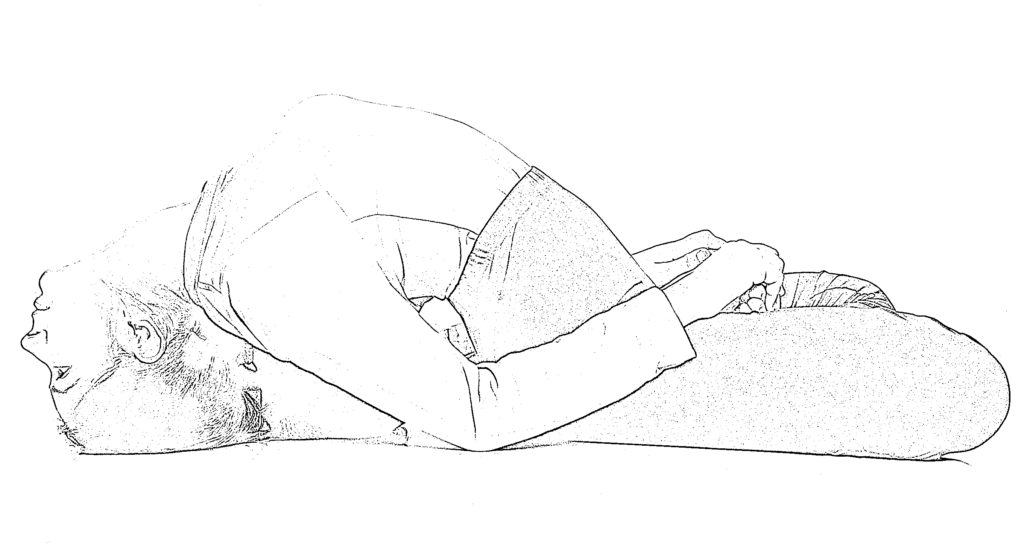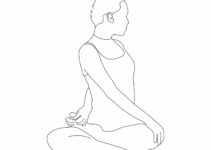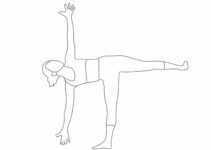What is the meaning of Matsyasana?
Matsyasana comprises two Sanskrit words: ‘Matsya’ means fish and ‘Asana’ means yoga pose. While performing, the yoga posture looks like a fish in the final stage, hence, the name is fish pose or matsyasana. The steps of practising matsyasana are pretty simple. The technique will become more accessible if one follows the given steps. Fish pose is associated with many essential health benefits like preventing and treating diseases like lungs, throat, digestive, etc. However, the beginner should take precautions or better to perform the same before a yoga therapist.
How to do Matsyasana- steps of fish pose?

- Sit in Padmasana. Easy steps of Padmasana
- Slowly bend backwards and lie on your back entirely.
- Lift the upper back with the support of elbows and palms and place the crown of your head on the ground.
- Hold the left foot with the right hand and subsequently the right foot with the left hand, resting the elbows on the floor.
- The knees must touch the ground and the back should be arched to the extent that the body is supported on the head and the knees. Maintain the final posture.
- While returning, release the toes, place palms on the ground, straighten the head with the help of hands and come up slowly.
- Relax in Savasana.
How do you breathe in Matsyasana?
How to breathe while practising yoga is essential? The same case is also applied while doing matsyasana. One should inhale while bending backwards and exhale while coming to the original position. The breathing should be slow and deep while maintaining the yoga pose.
9 Wonder benefits of Matsyasana
Matsyasana is an excellent backward-bending asana known for many significant health benefits.
A few of its benefits are being mentioned here.
- Cures constipation: Matsyasana gives an excellent massage to the abdominal organs thereby helping to alleviate various types of digestive disorders including constipation.
- Throat diseases: The regular practice of the yoga pose helps in the prevention and management of many throat diseases.
- Lung disorders: It helps to expand the chest and is beneficial in lung and respiratory disorders.
- Asthma prevention: The rib cage and lungs are given an accentuated stretch, which helps to improve the breathing process by allowing the chest to expand to total capacity during respiration. It is, therefore, a good asana for those people who have asthma, bronchitis, or any other lung ailments. Also read: How to treat asthma naturally?
- Sperm formation: It has been practically observed that those who perform the fish pose regularly have no issue forming sperms and ova. It is helpful for ladies in preventing and curing various forms of reproductive problems.
- Spine flexibility: It relaxes the muscles of the upper back and makes the spine resilient.
- Back pain: The practice of the pose under the guidance of a yoga teacher will ensure the cure of back pain.
- Pelvic health: It’s a good yoga practice for the health of the pelvic region.
- Healthy uterus: The practice of fish pose helps to strengthen the uterus, thus beneficial for overcoming uterus problems.
Matsyasana precautions
Here, we will discuss contraindications associated with fish pose. Some of the important precautions of the pose are:
- Peptic ulcer: People who are suffering from peptic ulcers should skip performing matsyasana.
- Hernia: Patients with hernia should avoid it.
- Spinal injury: It shouldn’t be practised for spinal ailments.
- Pregnancy: Pregnancy with an advanced stage of pregnancy should avoid this yoga pose.
Counterpose
- Sarvangasana
- Paschimottanasana
- Ardha padma paschimottanasana
- janu sirshasana





